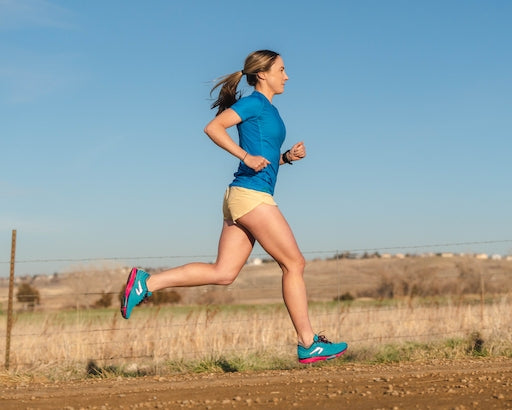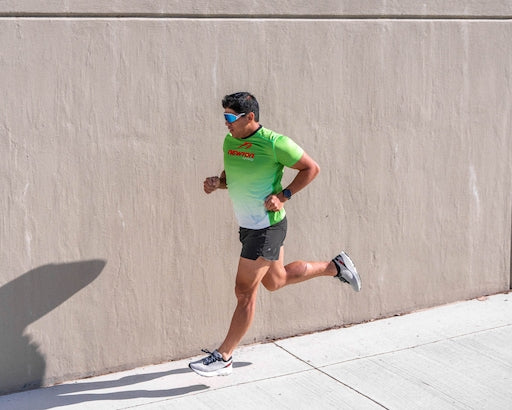
Newton Running’s Take on Barefoot Running
natural running overcoming injury running science shoe design29 January 2010
In the past few days we’ve been inundated with calls and messages from friends, customers and fans asking, “Did you see NPR.org barefoot running story or
BBC barefoot running story story about barefoot running?”
The answer is yes, we’ve seen Dr. Lieberman’s studies at Harvard and it clearly validates what Newton Running is all about.
Please read the open letter below from Newton Running co-founder Danny Abshire and our Director of Education, Ian Adamson.
Our Take on Barefoot Running
Many of you have seen or heard the numerous national news stories about barefoot running in the past few days. This news comes on the heels of the recently published study, Foot strike patterns and collision forces in habitually barefoot versus shod runners by Harvard University anthropologist Dan Lieberman.
Dr. Lieberman and colleagues concluded that modern, cushioned running shoes change the way humans run and hypothesize based on their biomechanical findings that forefoot and some midfoot strikes may make runners less prone to some kinds of injury. (He explains his hypothesis in this video).
That comes as no surprise to us at Newton Running. Our company was founded on the belief that the lifted heel in modern running shoes promotes improper form and can contribute to various injuries. Our shoes are designed specifically to accommodate and enhance natural running foot-strike and gait and are based on decades of research and observation on shoe technology and running mechanics.
Running barefoot is not a viable option for most people, except for short training sessions on forgiving surfaces. Plus, the transition to barefoot running or ultra-minimalist shoes can be difficult and/or painful for runners who have spent their whole lives running in heavily cushioned and overly structured shoes.
Newton Running shoes feature a geometry and design that facilitates your natural gait and protects you from harsh running surfaces. We offer the only viable alternative to both modern running shoes and barefoot/ultra-minimalist shoe running.
Newton Running Shoe Design
1. Typical running shoes feature a thick, padded heel and a steep heel-to-forefoot ramp angle (gradient), which encourages heavy heel striking, increases shock loads and dampens afferent feedback (the ability to sense the surface under your shoes). Newton Running shoes have a negligible gradient (between 1% and 3%), which allows your foot to land with a reduced impact and take advantage of your body’s natural suspension system. (click images to enlarge)
2. Newton Running shoes provide industry-leading impact force reduction and energy return with our proprietary Action/Reaction Technology™ strategically placed on the sweet spot under your forefoot.
3. Newton Running shoes are built with a biomechanical plate positioned directly under your metatarsals to enhance afferent feedback and allow your feet to spread naturally under load. The soft foam in regular running shoes dampens and blocks valuable protective feedback at foot strike. Without feeling the ground, runners will impact and push harder, creating the possibility for injury.
4. The anatomically designed upper and midsole allows your foot to move naturally throughout the gait cycle. In contrast, most modern running shoes are highly structured, rigidly encasing your foot and preventing natural movement. Over time, this weakens the foot and creates overuse of propulsive muscles/tendons, increasing the likelihood of running injuries.
Coaches around the world routinely use barefoot drills to improve running form. Newton Running has created the first natural running shoes for everyday training and racing that encourage barefoot running form. Join us in the Natural Running revolution.



